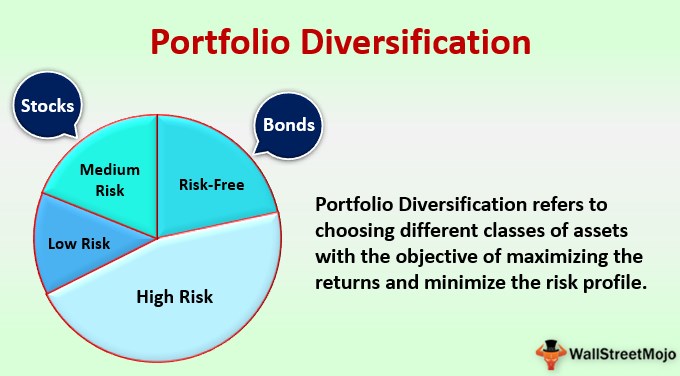Compared to the late 1970s era of the economy when big companies slowly began diversifying but essentially connected to core operations, today it has changed completely. Now new conglomerates are reaching all over irrespective whether there is expertise in th company or not and becoming ‘seemingly’ successful.
But the moot point is – by delving into hitherto in-experienced business lines, are companies – particularly those listed putting their shareholders at risk because the risk is greater in such acquisitions and a longer return on investment or, are they?
Forced to diversify
According to Deshan Pushparajah, Head of Corporate Finance Capital Alliance, conglomerates have historically been significant in Sri Lanka and in frontier markets in general for two specific reasons. One is because frontier market companies generally wouldn't have scale in operations in one business area, hence they diversified into many and some examples are Aitken Spence and John Keells Holdings. "Tourism or plantations weren't big enough on their own. Without being big enough they couldn't make best use of their expertise. Banks wouldn't lend as much to them, etc which is why they were forced to diversify,” he explained.
Conglomerates: Then and now
In the late 1970s when Sri Lanka’s closed economy opened out to the world big companies like John Keells Holdings and Aitken Spence Holdings, etc whose core business were tea and other trades slowly began diversifying into other areas. But the new businesses too were essentially connected to core operations.
Today, some 35 years later, it has changed completely with many firms putting their monies – and some of it publicly raised – into totally, unrelated new businesses. Diversification can put you on the fast track to growth but if the strategy fails it can also burn up your money.
History tells us that it’s not advisable to consider diversification until your core business is steady, stable and secure and profitable. If you’re still struggling to win orders and build a sales time for the core product, there is a real danger that diversification will take your eye of the ball.
There is a range of new and earlier established businesses like LOLC, Laugfs, Raigam, Softlogic, Vallibel, etc whose investments range from financial services, insurance, consumer products, real estate, food, banking, etc. Then there are the old established firms like CIC or Cargills that have newly expanded into core sector-related businesses.
The Business Times spoke to some entrepreneurs, analysts, academics and top CEOs to set straight this record.
The second reason Mr. Pushparajah noted was that there is very little venture capital available in Sri Lanka. “And banks are not willing to lend much to start ups either. Because conglomerates have large balance sheets, they could borrow/ source equity much faster and cheaper for start up ventures,” he noted, adding that some years ago only conglomerates could support fledgling businesses in frontier markets such as Sri Lanka.
However, he also noted that things are changing fast in Sri Lanka. “With operations scaling up, I think in four to five years you are going to see a fast de-conglomerizing (dropping non-core units) of companies. Whilst even in today's context conglomerates make sense, it won't in a few years. Most frontier markets (South Africa is a case in point) have gone through this phase,” he explained. According to him, once competition arrives in core business areas for these groups and volume and scale becomes demanding, they will start shedding non-core business areas.
Sattar Kassim, Director Expolanka Group said that diversifying is more to do with economies of scale. “For example just by building one hotel the economies of scale won’t be achieved. The real scale will come only by managing hotels and increasing the room capacity," he said.
He added that today is a specialist world where in the long run haphazard diversification won’t be a sustainable model.” One day they’ll be forced to scale down and divest the particular business or really go up the ladder and get proper economies of scale,” he added. Mr. Pushparajah noted that early conglomerates have subscribed to this thought and have slowly started shedding non-core businesses.
A business analyst noted that one can diversify his/ her business by natural progression. For instance, if you sell men’s shirts, adding ties and cufflinks to the range are an obvious next step. More radically, you extend the brand by offering a much wider range of products that will nonetheless appeal to the same customers. Alternatively, you can use the strength of a brand to move into new markets.
According to a researcher on capital markets, stock prices track productivity of firms and this tracking is equally strong for diversified and stand-alone firms.
Conglomerates don’t add value
He also highlighted that on a long term basis, conglomerates don't add much value to shareholders and in most instances they tend to destroy value. He added that this is especially so when firms diversify into business areas totally foreign to their own.“It is true that expertise can be bought, so can businesses and track records, but they will (a) come at a steep price and (b) would take on capital which could have been more effectively used by reinvesting in one's own core business,” he stressed.
What isn’t a moot point is that while expertise could be there, focus may not. This is why Mr. Pushparajah noted that shareholders stand a great chance of losing value when a firm diversifies without focus. The new age conglomerates, he added seem to be building empires instead of adding value to shareholders.
As far as risk goes - there is risk added on two fronts. The first is in terms of business risk. As much needed capital for core operations could be identified for a non-related venture, Mr. Pushparajah stressed that this is also putting the company at risk of competition and falling behind.
Second, most of the new age conglomerates are leveraged buyers. “Huge amounts of leverage could enhance return for shareholders, but also put shareholders at much greater risk. Hence the risk premium attached to the business should be much more. This is what rating agencies are warning against,” he highlighted.
On the longer term, he added that markets and investors would rationalize towards shareholders diversification viz a viz conglomerates. “This is always a much better way of diversifying risks and returns.”
Tea brokers like John Keells have diversified into other businesses.
The chairman of a heavily diversified firm, who declined to be named, stressed that a businessman in a diversification attempt has to look at what the growth sectors of the economy are during both medium and long term and align them to the growth sectors of the country.
“During this medium and long term cash flows of those growth sectors and their capital gains need to be considered. Cash flows in the short term can be mediocre, but capital gains can be exceptional and vice versa. After aligning the identified business to the country’s growth sector, one must examine whether the company possesses the internal competencies to venture into the particular business. "This follows an acquisition of a related business or starting afresh,” he explained.
Selective diversification
Nirmali Samaratunga, Co-Chairman Mackwoods Ltd noted that from Mackwoods’ experience diversification has been sustainable. "In the case of Mackwoods, with our long business experience we have, over the years strategically followed a business approach of continuously developing our core business areas whilst selectively diversifying into new businesses which primarily relate to our core domain and expertise," she explained.
She noted that this has enabled Mackwoods to create value and selectively spread the business risk whilst harnessing both institutional memory and also maintaining lean overhead costs, whilst leveraging on the broad existing knowledge base.
“This is exemplified by our theme 'tradition with vision'. This model has proved to be strong and sustainable and has worked for us,” she stressed.
In the case of new businesses’ diversification, Ms. Samaratunga noted that there's no definite 'yes' or "no' answer regarding the ability to succeed and whether this is a sustainable business model. “I feel it is subjective, dependant largely on that individual company or group's ability to undertake such diversification into unrelated lines, to ensure long term success and sustainability.
Whilst long years in the business and the accompanying reputation, trust, resilience and synergies with the existing businesses, certainly is an advantage and is an index of sustainability, still if the new business was to approach diversification in an informed manner and with an objective approach and taking a long term view of the sector it is entering, then there is no reason why they should not succeed. Many new companies have shown their ability to strongly succeed through such diversification, as is evident if one looks around.
I would (also) say the risk is not greater nor the return on investment less, provided the right approach and required conditions for success are in place and diversification is aimed at creation of value and the long term sustainability of the business. It's spreading one’s risks. We are into selective diversification into other areas. We were leveraging on our existing strengths," she explained, adding that Mackwoods always went for selective diversification in areas where they saw definite potential.
Winning strategy
Diversification, according to Dr. Ravi Liyanage, Chairman Raigam Group which has diversified during the past two years considerably said that it is a winning strategy. "It'll work if is implemented meaningfully, but not as a herd instinct or because it's the ‘in thing’.
As an academic and also as a CEO using public funds, my recommendation and also my practice in diversification decisions necessarily follow a mix of theoretical and practical formulae,” he said, explaining that fundamental in a diversification formula is the products or business units which have to be analyzed in terms of their position in the product life cycle (introduction, growth, maturity, decline) and market share plus growth momentum (BCG analysis; stars, cash cows, dogs, question marks).
With this analysis, how to go about the diversification process could be theoretically figured out. “For an example while retaining cash cows its excess cash generation could be considered for diversification, due to the fact that further investment in cash cow industry (cash inflows) is pointless as its growth potential is low,” he explained.
He also noted that when considering related diversification, that cash could be invested in good ventures which will be next cash cows. But Dr. Liyanage agreed that there are instances in the Sri Lankan context, where large businesses / conglomerates suddenly collapse due to ignoring fundamentals in diversification. “Especially once companies raise funds from the public, those are used in a wild way or as a passion for new investments / industries where management is not knowledgeable about the basic fundamentals of those businesses. They do trial and error while losing focus or sacrificing their core businesses. These new investments are ‘question marks’, it is really questionable whether it will work or not,” he explained.
Copy cats
He stressed that diversification as a 'copying others' strategy is a business model deserved for short-sight business people. “Any businessman who value sustainability of his business will never go in for such a wrong-diversification model," he added.
Prof. Uditha Liyanage, Director Postgraduate Institute of Management, noted that diversification is a matter of becoming opportunistic or sticking to one's core business. While noting that all entrepreneurs have great growth expectations, he said that the emotional factor of becoming 'big' plays an even bigger role in their diversification attempts. "With a single business, their growth potential is limited. Sri Lanka is a small country and for many businesses, the markets are small. So a single business doesn’t give those adequate numbers. In their core business the projected numbers are small, which is why they go into non-core areas.”
Prof. Liyanage noted that non-core areas come with two facets -opportunity for growth and the capability. “There should be a good fit of both these facets. What could typically happen is that they may see growth, but they won’t ask whether they possess the requisite competencies and capabilities,” he said. For instance, he noted that the tourism sector is a growth sector, but no one asks where exactly the growth is.
“One cannot work on a generalization that tourism is a growth sector,” he added, saying that getting into any sector shouldn’t be a knee-jerk reaction as invariably those businesses won’t sustain or they’ll be spreading themselves thin.
He added that when identifying an opportunity a company has to back it by getting in the relevant competencies. There’re also emotional reasons because being big is a good feeling. "The society expects them to grow their businesses and create jobs. If this sentiment overrides, it becomes dangerous. It’s important to separate each business unit and make them accountable for each of their businesses," Prof. Liyanage said.
Nishan Sumanadeera, CEO Frontier Capital Partners noted that in business, growth can be achieved in many different ways and that organic and inorganic growth is considered two of the key methods.
Organic growth is painful
"Organic growth is painful and time consuming process which requires considerable amount of time and effort. This is what most companies in the early 70's were engaged in, starting new business that compliment with their core business and tirelessly building bridges between businesses. But today’s business managers have a more dynamic and fast way to growth or conglomeration. This is via mergers and acquisition of well run businesses through capital market activities,” he explained.
Although this method can be considered as an easy way to the top, today’s business managers have the more challenging task of identifying businesses opportunities that may bring synergies with its existing business in a more complex macro economic environment, according to Mr. Sumanadeera.
“Currently we see, hospital owning companies acquiring insurance companies, financial conglomerates diversifying into hotels and media but common justification for most acquisitions are often been stated as the growth potential of the specific sector as against the corporate synergies.”
He added that sectoral diversification is good but it should come at the correct time. "Diversification should happen only after integration and consolidation of the exiting core businesses. It is difficult for a business to grow in the long run unless acquisition is planned in a way that would compliment the overall business position of the acquirer across all its businesses regardless of the sector.”
By Duruthu Edirimuni Chandrasekera
Sunday Times
http://www.sundaytimes.lk/120325/BusinessTimes/bt08.html
Last edited by Quibit on Thu Nov 19, 2020 7:37 am; edited 1 time in total
 would enable you to enjoy an array of other services such as Member Rankings, User Groups, Own Posts & Profile, Exclusive Research, Live Chat Box etc..
would enable you to enjoy an array of other services such as Member Rankings, User Groups, Own Posts & Profile, Exclusive Research, Live Chat Box etc.. 
 Home
Home



















